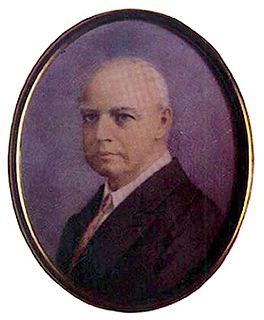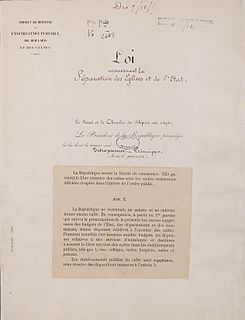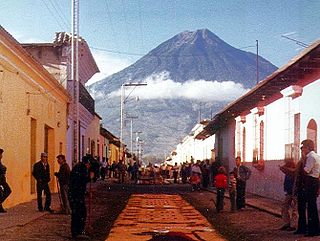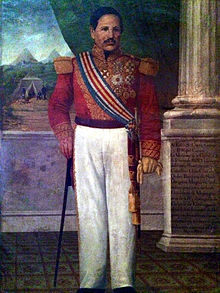
The First Council of the Lateran was the 9th ecumenical council recognized by the Catholic Church. It was convoked by Pope Callixtus II in December 1122, immediately after the Concordat of Worms. The council sought to bring an end to the practice of the conferring of ecclesiastical benefices by people who were laymen, free the election of bishops and abbots from secular influence, clarify the separation of spiritual and temporal affairs, re-establish the principle that spiritual authority resides solely in the Church and abolish the claim of the emperors to influence papal elections.

The Lateran Treaty was one component of the Lateran Pacts of 1929, agreements between the Kingdom of Italy under King Victor Emanuel III and the Holy See under Pope Pius XI to settle the long-standing Roman Question. The treaty and associated pacts were named after the Lateran Palace where they were signed on 11 February 1929, and the Italian parliament ratified them on 7 June 1929. The treaty recognized Vatican City as an independent state under the sovereignty of the Holy See. The Italian government also agreed to give the Roman Catholic Church financial compensation for the loss of the Papal States. In 1948, the Lateran Treaty was recognized in the Constitution of Italy as regulating the relations between the state and the Catholic Church.

The Concordat of 1801 was an agreement between Napoleon Bonaparte and Pope Pius VII, signed on 15 July 1801 in Paris. It remained in effect until 1905. It sought national reconciliation between revolutionaries and Catholics and solidified the Roman Catholic Church as the majority church of France, with most of its civil status restored. This resolved the hostility of devout French Catholics against the revolutionary state. It did not restore the vast church lands and endowments that had been seized upon during the revolution and sold off. Catholic clergy returned from exile, or from hiding, and resumed their traditional positions in their traditional churches. Very few parishes continued to employ the priests who had accepted the Civil Constitution of the Clergy of the Revolutionary regime. While the Concordat restored much power to the papacy, the balance of church-state relations tilted firmly in Napoleon's favour. He selected the bishops and supervised church finances.

The Reichskonkordat is a treaty negotiated between the Vatican and the emergent Nazi Germany. It was signed on 20 July 1933 by Cardinal Secretary of State Eugenio Pacelli, who later became Pope Pius XII, on behalf of Pope Pius XI and Vice Chancellor Franz von Papen on behalf of President Paul von Hindenburg and the German government. It was ratified 10 September 1933 and it has been in force from that date onward. The treaty guarantees the rights of the Catholic Church in Germany. When bishops take office Article 16 states they are required to take an oath of loyalty to the Governor or President of the German Reich established according to the constitution. The treaty also requires all clergy to abstain from working in and for political parties. Nazi breaches of the agreement began almost as soon as it had been signed and intensified afterwards leading to protest from the Church including in the 1937 Mit brennender Sorge encyclical of Pope Pius XI. The Nazis planned to eliminate the Church's influence by restricting its organizations to purely religious activities.

José Rafael Carrera y Turcios was the president of Guatemala from 1844 to 1848 and from 1851 until his death in 1865, after being appointed President for life in 1854. During his military career and presidency, new nations in Central America were facing numerous problems: William Walker's invasions, liberal attempts to overthrow the Catholic Church and aristocrats' power, the Civil War in the United States, Mayan uprising in the east, Belize boundary dispute with the United Kingdom, and the wars in Mexico under Benito Juarez. This led to a rise of caudillos, a term that refers to charismatic populist leaders among the indigenous people.

Pedro de Aycinena y Piñol was a conservative politician and member of the Aycinena clan that worked closely with the conservative regime of Rafael Carrera. He was interim president of Guatemala in 1865 after the death of president for life, general Rafael Carrera.

Pietro Gasparri, GCTE was a Roman Catholic cardinal, diplomat and politician in the Roman Curia and the signatory of the Lateran Pacts. He served also as Cardinal Secretary of State under Popes Benedict XV and Pope Pius XI.

The 1905 French law on the Separation of the Churches and State was passed by the Chamber of Deputies on 9 December 1905. Enacted during the Third Republic, it established state secularism in France. France was then governed by the Bloc des gauches led by Emile Combes. The law was based on three principles: the neutrality of the state, the freedom of religious exercise, and public powers related to the church. This law is seen as the backbone of the French principle of laïcité (secularism). It is however not applicable in Alsace and Moselle.

Josephinism was the collective domestic policies of Joseph II, Holy Roman Emperor (1765–1790). During the ten years in which Joseph was the sole ruler of the Habsburg Monarchy (1780–1790), he attempted to legislate a series of drastic reforms to remodel Austria in the form of what liberals saw as an ideal Enlightened state. This provoked severe resistance from powerful forces within and outside his empire, but ensured that he would be remembered as an "enlightened ruler" by historians from then to the present day.

The Catholic Church in Hungary is part of the worldwide Catholic Church, under the spiritual leadership of the Pope in Rome.
The Concordat of 1953 was the last classic concordat of the Catholic Church, signed on 27 August 1953 by Spain with the Vatican. Together with the Pact of Madrid, signed the same year, it was a significant effort to break Spain's international isolation after World War II.
The 1925 concordat (agreement) between the Holy See and the Second Polish Republic had 27 articles, which guaranteed the freedom of the Church and the faithful. It regulated the usual points of interests, Catholic instruction in primary schools and secondary schools, nomination of bishops, establishment of seminaries, a permanent nuncio in Warsaw, who also represents the interests of the Holy See in Gdańsk. It was considered one of the most favorable concordats for the Holy See, and would become a basis for many future concordats.

The Vatican and Eastern Europe (1846–1958) describes the relations from the pontificate of Pope Pius IX (1846–1878) through the pontificate of Pope Pius XII (1939–1958). It includes the relations of the Church State (1846–1870) and the Vatican (1870–1958) with Russia (1846–1918), Lithuania (1922–1958) and Poland (1918–1958).
The Patronato system in Spain was the expression of royal patronage controlling major appointments of Church officials and the management of Church revenues, under terms of concordats with the Holy See. The resulting structure of royal power and ecclesiastical privileges, was formative in the Spanish colonial empire. It resulted in a characteristic constant intermingling of trade, politics, and religion. The papacy granted the power of patronage to the monarchs of Spain and Portugal to appoint clerics because the monarchs "were willing to subsidize missionary activities in newly conquered and discovered territories."
The Concordat of 1851 was a concordat between the Spanish government of Queen Isabella II and the Vatican. It was negotiated in response to the policies of the anticlerical Liberal government, which had forced her mother out as regent in 1841. Although the concordat was signed on 16 March 1851, its terms were not implemented until 1855.
The 1847 Agreement between the Holy See and the Russian Empire was a diplomatic arrangement entered into on 3 August of that year.
The relationship between Pope Pius XI and Poland is often considered to have been good, as Church life in Poland flourished during his pontificate.

Holy Week in Guatemala is celebrated with street expressions of faith, called processions, usually organized by a "hermandad". Each procession of Holy Week has processional floats and steps, which are often religious images of the Passion of Christ, or Marian images, although there are exceptions, like the allegorical steps of saints.

Juan José de Aycinena y Piñol was an ecclesiastical and intellectual conservative in Central America. He was President of the Pontifical University of San Carlos Borromeo from 1825 to 1829 and then of the Universidad Nacional from 1840 to 1865. He was a thinker criticized by liberal historians for his strong relationship with the conservative government of General Rafael Carrera and for eliminating the possibility of getting the Central American Union which the Liberals wanted. His participation in the government has been assessed more objectively in research conducted between 1980 and 2010. He was heir in 1814 to the noble title of III Marquess of Aycinena, and bishop in partibus of Trajanopolis from 1859. He had a taste for law, oratorical talent and wrote over twenty works.

Vicente Cerna y Cerna was president of Guatemala from 24 May 1865 to 29 June 1871. Loyal friend and comrade of Rafael Carrera, was appointed army's Field Marshal after Carraera's victory against Salvadorian leader Gerardo Barrios in 1863. He was appointed Carrera's successor after the caudillo's death in 1865 even though Guatemalan leaders would have preferred Field Marshal José Víctor Zavala.














